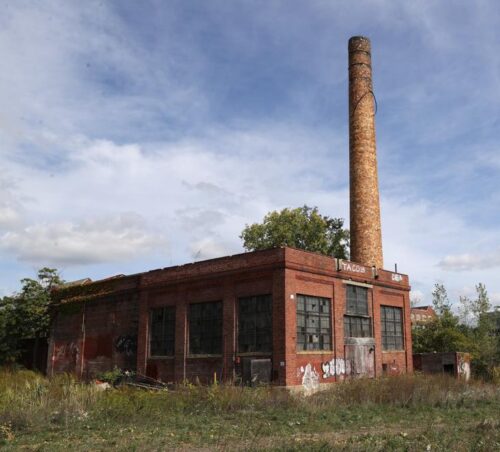NEW YORK — Economy Candy’s shelves brim with sweets from around the world – gummies from Germany, lollipops from Spain, chocolates from Japan, and a panoply of candies from across the US.
Standing amid it all, columns of bright jellybeans to his left and exotic Kit Kats to his right, owner Mitchell Cohen is quick with his assessment of how many of this shop’s 2,000-plus items are affected by the historic round of tariffs announced by President Trump.
“I think all of them,’’ Cohen says at his store on New York’s Lower East Side.
Few corners of the American economy are untouched, directly or indirectly, by the sweeping tariffs being imposed by Trump. Even a little store like Economy Candy.
Cohen had just begun to feel a barrage of inflation-driven price increases from suppliers ease when the tariff threats arrived. For a business with a name like Economy Candy, he wants to remain affordable but fears how high some prices may have to climb in the coming months.
“I think it’s gonna be another round of this hyperinflation on some items,’’ says 39-year-old Cohen. “If we’re putting tariffs everywhere, it is going to go up.’’
Stepping into Economy Candy feels like a time warp. Its name is emblazoned on a sign in a vintage, blaring red script, and crossing below its green-and-white striped awning, past the bins of Smarties, butterscotches, and Lemonheads in the front window, an indecipherable sweetness fills the air, oldies music sounds overhead, and customers mill around stacks of candy bars they forgot still existed.
It represents just a blip in the country’s $54 billion candy industry. But it was already feeling the weight of surges in prices of cocoa and other ingredients before tariffs were layered on.
Candy and gum prices are up about 34 percent from five years ago and 89 percent from 2005, according to Consumer Price Index data. Price, according to the National Confectioners Association, has become the top factor in consumers’ candy purchase decisions, outweighing a buyer’s mood.
About a third of Economy Candy’s products are imported, crowded on shelves and tables near the store’s rear. There aren’t just “more German Haribo varieties than the Haribo store in Germany,’’ as Cohen claims, but gummies the brand makes in France, Austria, and Britain.
They have every Milka bar they can find in Switzerland, every type of Leone hard candies that Italy churns out, and as many exotic Kit Kats from Japan as they can fit.
On products like these, the tariffs’ toll is obvious.
Pistachio Snickers bars are from India, now subject to 26 percent tariffs, while passion fruit mousse Snickers are from Portugal, now under the 20 percent European Union levies.
But even an American-made Snickers isn’t immune.
While the bars may roll off conveyors in Texas, they rely on ingredients from around the globe. Sourcemap, which tracks supply chains, says Snickers bars include chocolate from Guyana and sugar from Brazil and are wrapped in packaging from Canada. All are now subjected to varying levels of tariffs.
“There’s a lot of ingredients in there that have to come from other countries,’’ says Andreas Waldkirch, an economics professor at Colby College who teaches a class on international trade. “Unless you’re talking about something very simple from your local farmers market, almost every product relies on ingredients from elsewhere. Those indirect costs are really what’s going to drive up prices.’’
The story repeats with American candies across the store – the boxes of Nerds and bags of Sugar Babies and rolls of Smarties are all inextricably tied to the global supply chain.
If tariffs upend things, Cohen isn’t sure how he might adapt. He sells products that aren’t made in America and he sells American products made with ingredients from across the globe. He had just been making headway on beginning international sales, but the web of tariff rules may make it impossible.
“I can understand bringing manufacturing and bringing things back to America, but you know, we rely on raw materials that just aren’t native to our country,’’ he says. “And it’s not like I can get a green tea Japanese Kit Kat from an American company.’’

